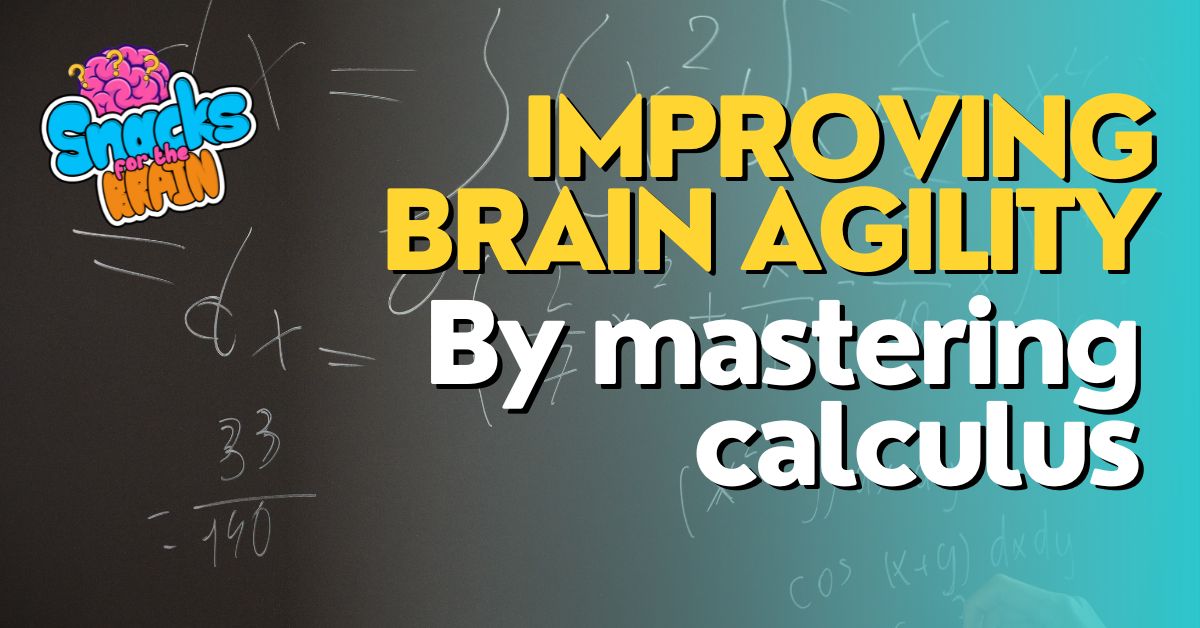Introduction
Have you ever struggled to remember something important, like a phone number or a new vocabulary word? It can be frustrating when our memory fails us, especially when we need to recall information for an exam or an important presentation. Fortunately, there is a solution to this problem: spaced repetition. Spaced repetition is a learning technique that involves reviewing information at increasing intervals over time. In this article, we will explore the concept of spaced repetition, how it works, and its benefits for memory retention. We will also provide practical tips for implementing spaced repetition in your learning routine and discuss the role of active recall and timing in optimizing learning intervals. Additionally, we will compare spaced repetition with cramming and provide real-life examples and success stories of individuals who have used spaced repetition to improve their memory retention. Finally, we will discuss the future of spaced repetition and potential advancements in memory retention techniques.
What is Spaced Repetition and How Does it Work?
Spaced repetition is a learning technique that involves reviewing information at increasing intervals over time. The idea behind spaced repetition is that by spacing out the review of information, our brains are better able to retain and recall that information in the long term. This is because our brains are more likely to remember information when it is repeatedly encountered over time, rather than when it is crammed all at once.
The science behind spaced repetition lies in the way our brains encode and store memories. When we learn something new, our brains form connections between neurons, creating neural pathways that represent that information. These neural pathways are strengthened through repetition, which allows for easier retrieval of the information later on.
Spaced repetition is used in everyday life in various ways. For example, when learning a new language, it is common to review vocabulary words at regular intervals to reinforce memory retention. Similarly, when studying for an exam, many students use flashcards or practice quizzes to review material over time. By spacing out the review of information, these individuals are able to improve their memory retention and recall.
The Science of Memory Retention: Understanding the Brain’s Learning Process
To understand why spaced repetition is effective for memory retention, it is important to understand the different types of memory and how they are stored in the brain. There are two main types of memory: short-term memory and long-term memory. Short-term memory refers to the temporary storage of information, while long-term memory refers to the more permanent storage of information.
When we learn something new, it first enters our short-term memory. However, if we do not actively reinforce that information, it is likely to be forgotten. This is where spaced repetition comes in. By reviewing information at increasing intervals over time, we are able to transfer that information from our short-term memory to our long-term memory.
Repetition plays a crucial role in memory retention. When we encounter information multiple times, our brains form stronger neural connections, making it easier for us to recall that information later on. This is why reviewing information at regular intervals is more effective than cramming it all at once. Spaced repetition allows for repeated exposure to information, reinforcing those neural connections and improving memory retention.
Scientific evidence supports the effectiveness of spaced repetition for memory retention. A study published in Psychological Science found that spaced repetition was more effective than massed repetition (cramming) for learning and retaining new vocabulary words. Another study published in the Journal of Applied Research in Memory and Cognition found that spaced repetition improved long-term retention of medical knowledge among medical students.
The Benefits of Spaced Repetition: Improved Recall and Retention
There are several advantages to using spaced repetition over other learning methods. One of the main benefits is improved recall and retention. By reviewing information at increasing intervals over time, our brains are better able to encode and store that information in our long-term memory. This means that we are more likely to remember the information in the long term, rather than forgetting it shortly after learning it.
Spaced repetition also allows for more efficient learning. By spacing out the review of information, we can optimize our study time and avoid wasting time on material that we have already mastered. This is especially beneficial for individuals who have limited time to study or who need to learn a large amount of information in a short period of time.
Another advantage of spaced repetition is that it promotes active engagement with the material. When we review information at regular intervals, we are actively retrieving that information from our memory. This process of active recall strengthens our neural connections and improves memory retention. In contrast, passive learning methods, such as re-reading or highlighting, do not require active engagement and are less effective for memory retention.
Spaced repetition can be applied in various contexts to improve recall and retention. For example, students can use spaced repetition to study for exams by reviewing material at regular intervals leading up to the exam. Language learners can use spaced repetition to reinforce vocabulary words by reviewing them at increasing intervals over time. Professionals can use spaced repetition to retain important information by periodically reviewing key concepts or procedures.
How to Implement Spaced Repetition Techniques in Your Learning Routine
Incorporating spaced repetition into your learning routine is relatively simple and can be done with a few practical tips. First, it is important to create a schedule for reviewing information at regular intervals. This can be done using a calendar or a digital reminder system. Start by reviewing the material shortly after learning it, then gradually increase the intervals between reviews.
When reviewing the material, it is important to actively engage with it through active recall. This can be done by testing yourself on the material, either through practice quizzes or flashcards. By actively retrieving the information from your memory, you are strengthening the neural connections associated with that information and improving memory retention.
There are also several tools and resources available for implementing spaced repetition. One popular tool is Anki, a digital flashcard program that uses spaced repetition algorithms to optimize learning intervals. Another tool is Quizlet, which allows users to create and share flashcards with spaced repetition features. These tools can be especially helpful for language learners or students studying for exams.
The Role of Active Recall in Spaced Repetition: Why Testing Yourself is Key
Active recall is a key component of spaced repetition and plays a crucial role in memory retention. Active recall refers to the process of actively retrieving information from memory, rather than simply re-reading or passively reviewing it. When we actively recall information, we are engaging our brains in the process of retrieval, which strengthens the neural connections associated with that information.
Testing yourself is one way to incorporate active recall into your learning routine. This can be done through practice quizzes or flashcards. By testing yourself on the material, you are forcing your brain to actively retrieve that information from memory. This process of active recall strengthens the neural connections associated with the information, making it easier to remember and recall in the future.
Active recall is more effective for memory retention than passive learning methods, such as re-reading or highlighting. When we passively review information, we are not actively engaging with it and are less likely to remember it in the long term. In contrast, active recall requires us to actively retrieve the information from memory, which strengthens the neural connections associated with that information and improves memory retention.
There are several strategies for incorporating active recall into your learning routine. One strategy is to create practice quizzes or flashcards that test your knowledge of the material. Another strategy is to teach the material to someone else, as this requires you to actively retrieve and explain the information. By incorporating active recall into your learning routine, you can enhance memory retention and improve your overall learning experience.
The Importance of Timing in Spaced Repetition: How to Optimize Learning Intervals
Timing is an important factor in spaced repetition and can greatly impact the effectiveness of the technique. The intervals at which you review information should be carefully timed to optimize memory retention. Reviewing information too frequently can lead to overlearning, while reviewing it too infrequently can lead to forgetting.
The optimal timing for spaced repetition intervals depends on several factors, including the difficulty of the material and your individual learning needs. Generally, it is recommended to review information shortly after learning it, then gradually increase the intervals between reviews. This allows for repeated exposure to the material, reinforcing the neural connections associated with that information.
There are several strategies for adjusting spaced repetition intervals based on individual learning needs. One strategy is to use a digital flashcard program, such as Anki or Quizlet, that uses spaced repetition algorithms to optimize learning intervals. These programs track your performance on each flashcard and adjust the intervals accordingly.
Another strategy is to use a technique called “graduated intervals.” This involves reviewing information at increasing intervals over time. For example, you might review the material after one day, then after three days, then after one week, and so on. By gradually increasing the intervals between reviews, you are reinforcing memory retention and optimizing learning.
It is important to note that everyone’s learning needs are different, and what works for one person may not work for another. It may take some trial and error to find the optimal spaced repetition intervals for your individual learning needs. However, by paying attention to your own performance and adjusting the intervals accordingly, you can optimize memory retention and improve your overall learning experience.
The Impact of Spaced Repetition on Long-Term Memory Retention
One of the key benefits of spaced repetition is its impact on long-term memory retention. By reviewing information at increasing intervals over time, our brains are better able to encode and store that information in our long-term memory. This means that we are more likely to remember the information in the long term, rather than forgetting it shortly after learning it.
Spaced repetition allows for repeated exposure to information, reinforcing the neural connections associated with that information. When we encounter information multiple times, our brains form stronger neural connections, making it easier for us to recall that information later on. This is why reviewing information at regular intervals is more effective than cramming it all at once.
There is scientific evidence to support the long-term benefits of spaced repetition. A study published in the Journal of Experimental Psychology found that spaced repetition improved long-term retention of foreign language vocabulary among college students. Another study published in the Journal of Memory and Language found that spaced repetition improved long-term retention of word pairs among participants.
Spaced repetition is especially effective for long-term memory retention when combined with active recall. By actively retrieving information from memory, we are strengthening the neural connections associated with that information and improving memory retention. This combination of spaced repetition and active recall allows for more efficient encoding and storage of information in our long-term memory.
Spaced Repetition vs. Cramming: Why Slow and Steady Wins the Memory Race
When it comes to learning and memory retention, slow and steady wins the race. Spaced repetition is a more effective learning technique than cramming for several reasons. First, spaced repetition allows for repeated exposure to information over time, reinforcing the neural connections associated with that information. This makes it easier for us to remember and recall that information in the long term.
Cramming, on the other hand, involves reviewing a large amount of information in a short period of time. While cramming may lead to short-term memory retention, it is less effective for long-term memory retention. This is because our brains are more likely to remember information when it is encountered multiple times over time, rather than when it is crammed all at once.
Another reason why spaced repetition is more effective than cramming is that it promotes active engagement with the material. When we review information at regular intervals, we are actively retrieving that information from our memory. This process of active recall strengthens the neural connections associated with that information and improves memory retention.
In contrast, cramming often involves passive learning methods, such as re-reading or highlighting. These methods do not require active engagement with the material and are less effective for memory retention. By actively engaging with the material through active recall, spaced repetition allows for more efficient encoding and storage of information in our long-term memory.
Spaced Repetition in Practice: Real-Life Examples and Success Stories
There are many real-life examples and success stories of individuals who have used spaced repetition to improve their memory retention. One example is language learning. Many language learners use spaced repetition to reinforce vocabulary words by reviewing them at increasing intervals over time. By regularly reviewing vocabulary words, language learners are able to improve their memory retention and recall of those words.
Another example is exam preparation. Many students use spaced repetition to study for exams by reviewing material at regular intervals leading up to the exam. By spacing out the review of information, students are able to optimize their study time and improve their memory retention and recall of the material.
There are also success stories of professionals who have used spaced repetition to retain important information. For example, medical professionals often use spaced repetition to review key concepts or procedures. By periodically reviewing this information, medical professionals are able to reinforce their memory retention and ensure that they are up-to-date on the latest medical knowledge.
Spaced repetition can be applied in various contexts to improve memory retention and recall. Whether you are learning a new language, studying for an exam, or trying to retain important information for your profession, spaced repetition can be a valuable tool for enhancing your learning experience.
The Future of Spaced Repetition: Innovations and Advancements in Memory Retention Techniques
The future of spaced repetition looks promising, with potential advancements in memory retention techniques on the horizon. One area of innovation is the development of digital tools and resources for implementing spaced repetition. As technology continues to advance, we can expect to see more sophisticated flashcard programs and learning platforms that use spaced repetition algorithms to optimize learning intervals.
Virtual reality (VR) is another area of innovation that has the potential to enhance memory retention techniques. VR allows users to immerse themselves in a virtual environment, which can enhance the learning experience and improve memory retention. For example, language learners could use VR to practice conversations with virtual native speakers, reinforcing vocabulary and grammar concepts through active engagement.
Another area of advancement is the integration of spaced repetition into educational curricula. As more research supports the effectiveness of spaced repetition for memory retention, we can expect to see it incorporated into educational programs at all levels. This could include the development of spaced repetition-based textbooks and learning materials, as well as the integration of spaced repetition techniques into classroom instruction.
Overall, the future of spaced repetition holds great potential for improving memory retention techniques. As technology continues to advance and our understanding of the brain’s learning process deepens, we can expect to see even more innovative and effective methods for enhancing memory retention through spaced repetition.
In conclusion, spaced repetition is a powerful learning technique that can greatly improve memory retention and recall. By reviewing information at increasing intervals over time, our brains are better able to encode and store that information in our long-term memory. Spaced repetition allows for more efficient and effective learning, as it takes advantage of the brain’s natural forgetting curve. By spacing out review sessions, we are able to reinforce and strengthen our memory of the material, leading to better long-term retention. Additionally, spaced repetition helps to combat the phenomenon of cramming, where information is quickly learned and then quickly forgotten. Instead, with spaced repetition, we are able to continually review and reinforce the material, ensuring that it becomes deeply ingrained in our memory. Overall, incorporating spaced repetition into our study routine can lead to significant improvements in learning and retention.
If you’re interested in enhancing your memory and intelligence, you might also find this article on “Unlocking the Full Potential of Your Brain: Tips for Increasing Intelligence and Memory” helpful. It explores various techniques and strategies to boost cognitive abilities and improve memory retention. Check it out here.
FAQs
What is spaced repetition?
Spaced repetition is a learning technique that involves reviewing information at increasing intervals to improve long-term memory retention.
How does spaced repetition work?
Spaced repetition works by presenting information at increasing intervals, allowing the brain to consolidate the information into long-term memory. This technique takes advantage of the brain’s ability to remember information better when it is reviewed at spaced intervals.
What is the science behind spaced repetition?
The science behind spaced repetition is based on the psychological principle of the spacing effect, which states that learning is more effective when studying is spaced out over time. This technique has been shown to improve long-term memory retention and recall.
What are the benefits of using spaced repetition?
The benefits of using spaced repetition include improved long-term memory retention, increased recall, and more efficient learning. This technique can also help learners retain information for longer periods of time and reduce the amount of time needed for review.
What are some examples of spaced repetition techniques?
Some examples of spaced repetition techniques include flashcards, spaced repetition software, and the Leitner system. These techniques involve reviewing information at increasing intervals to improve long-term memory retention.
Is spaced repetition effective for all types of learning?
Spaced repetition is effective for most types of learning, including language learning, memorization of facts and figures, and learning new skills. However, it may not be as effective for more complex or abstract concepts that require deeper understanding and analysis.






